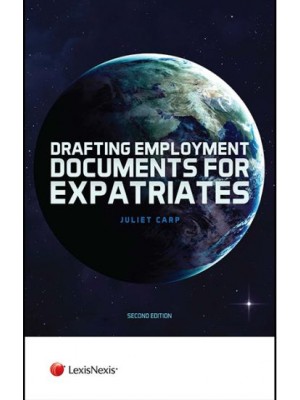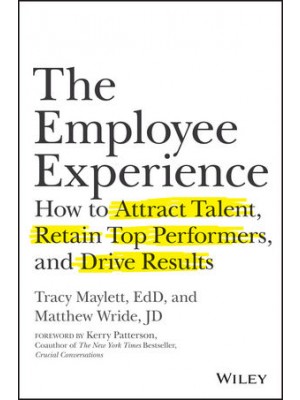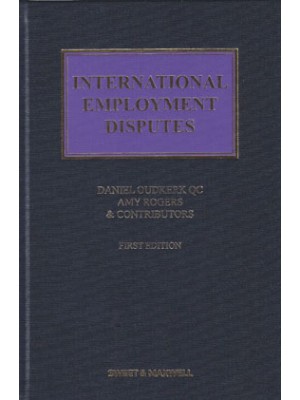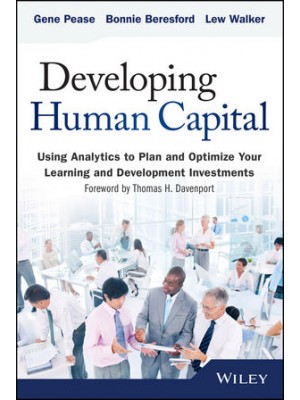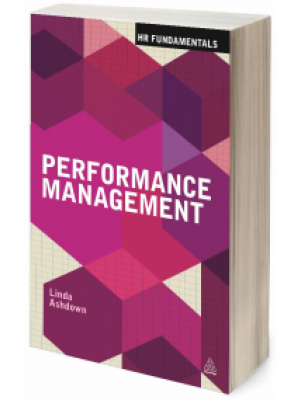Introduction xi
1 Purpose and Structure of Financial Markets 1
1.1 Overview of Financial Markets 1
1.2 Risk Sharing 2
1.3 Transactional Structure of Financial Markets 6
1.4 Arbitrage: Pure Versus Relative Value 8
1.5 Financial Institutions: Transforming Intermediaries vs Broker-Dealers 12
1.6 Primary (Issuance) and Secondary (Resale) Markets 13
1.7 Market Players: Hedgers vs Speculators 15
1.8 Preview of the Book 18
PART I RELATIVE VALUE BUILDING BLOCKS
2 Spot Markets 23
2.1 Bonds and Annual Bond Math 23
2.1.1 Zero-Coupon Bond 23
2.1.2 Coupon Bond 25
2.1.3 Amortizing Bond 27
2.1.4 Floating Rate Bond 28
2.2 Intra-Year Compounding and Day-Count 30
2.2.1 Intra-Year Compounding 30
2.2.2 Day-Count 31
2.2.3 Accrued Interest 33
2.3 Term Structure of Interest Rates and the Discount Factor Bootstrap 34
2.3.1 Term Structure 34
2.3.2 Discount Factor Bootstrap 36
2.3.3 Valuation of an Arbitrary Bond 36
2.4 Interest Rate Risk: Duration and Convexity 39
2.4.1 Duration 41
2.4.2 Portfolio Duration 44
2.4.3 Convexity 45
2.4.4 Other Risk Measures 46
2.5 Equity, Commodity, and Currency Math 47
2.5.1 Equities 48
2.5.2 Currencies 49
2.6 Short Selling 51
2.6.1 Buying on Margin 52
2.6.2 Short Selling in a Margin Account 53
2.6.3 Short Selling of Bonds 54
3 Futures Markets 57
3.1 Fundamentals of Futures and Forwards 57
3.2 Futures Mechanics 59
3.2.1 Physical Commodity Futures 59
3.2.2 Interest Rate Futures 62
3.2.3 Stock Index Futures 69
3.2.4 Currency Futures and Forwards 70
3.3 Cash-and-Carry Arbitrage 73
3.3.1 Commodities 74
3.3.2 Stock Indexes 76
3.3.3 Currencies 79
3.4 Futures Not Subject to Cash-and-Carry 81
3.5 Yield Curve Construction with Interest Rate Futures 84
3.5.1 Certainty Equivalence of Eurodollar Futures 85
3.5.2 Forward Rate Agreements 86
3.5.3 Building Spot Zeros 88
3.5.4 Recovering the Forwards 91
3.5.5 Including Repo Rates in the Calculation of the Forwards 93
4 Swap Markets 95
4.1 Fundamentals of Swaps 95
4.1.1 The Dual Nature of Swaps 96
4.1.2 Implication for Pricing and Hedging 96
4.2 Interest Rate Swaps 97
4.2.1 Definition of an Interest Rate Swap 97
4.2.2 Valuation of Interest Rate Swaps 99
4.2.3 Hedging of Interest Rate Swaps 101
4.3 Cross-Currency Swaps 105
4.3.1 Definition of a Fixed-for-Fixed Cross-Currency Swap 105
4.3.2 Valuation and Settlement of Cross-Currency Swaps 107
4.3.3 Cross-Currency Swaps as Packages of Off-Market FX Forwards 109
4.3.4 Multicurrency and Combination Cross-Currency Swaps 110
4.4 Equity, Commodity, and Exotic Swaps 112
4.4.1 Equity Swaps 112
4.4.2 Commodity Swaps 114
4.4.3 Volatility Swaps 115
4.4.4 Index Principal Swaps 116
5 Options on Prices and Hedge-Based Valuation 119
5.1 Call and Put Payoffs at Expiry 120
5.2 Composite Payoffs at Expiry 122
5.2.1 Straddles and Strangles 122
5.2.2 Spreads and Combinations 123
5.3 Option Values Prior to Expiry 126
5.4 Options and Forwards, Risk Sharing and Put–Call Parity 127
5.5 Currency Options 128
5.6 Binomial Option Pricing 129
5.6.1 One-Step Examples 129
5.7 Black–Scholes Model and Extensions 141
5.7.1 Black–Scholes with No Dividends 141
5.7.2 Dividends 142
5.7.3 Options on Currency Rates 143
5.7.4 Black–Scholes Delta, Gamma, and Vega 144
5.8 Residual Risk of Options: Gamma, Vega, and Volatility 145
5.8.1 Implied Volatility 147
5.8.2 Volatility Smiles and Skews 148
5.9 A Real-Life Option Pricing Exercise 150
5.9.1 Consistency Checks: Put–Call Parity, Black–Scholes, and Binomial 150
6 Options on Non-Price Variables 155
6.1 Black Models For Bond Price Options, Caps/Floors, and European Swaptions 156
6.1.1 Options on Bond Prices 156
6.1.2 Cap and Floor Definitions 158
6.1.3 Relationship of Caps and Floors to FRAs and Swaps 159
6.1.4 A Cap Application 160
6.1.5 Pricing of Caps and Floors 163
6.1.6 European Swaption Definitions 164
6.1.7 Options to Cancel Swaps 165
6.1.8 Relationship of Swaptions to Forward Swaps 165
6.1.9 Pricing of European Swaptions 167
6.1.10 Limitations of the Black Model 168
6.2 Convexity-Adjusted Models For Libor Forwards, Quantos, and Constant Maturity Swaps 168
6.2.1 Convexity Adjustment for Eurodollar Futures 169
6.2.2 Convexity Adjustment for CMS Options 170
6.2.3 Quanto Adjustments 171
6.3 Arbitrage-Free Interest Rate Models 172
6.3.1 Short Rate Models 173
6.3.2 Trinomial Trees and Calibration 174
6.3.3 The Heath–Jarrow–Morton Model and the LIBOR Market Model 176
6.3.4 Bermudan Swaptions and Multifactor Models 180
6.4 Exotic Interest Rate Options 181
6.4.1 Periodic Caps 181
6.4.2 Digitals and Ranges 181
7 Default Risk and Credit Derivatives 183
7.1 Credit Default Swaps 184
7.1.1 Credit Default Swap 184
7.1.2 No Arbitrage: CDS vs Corporate Bond Spread 185
7.1.3 Bundled Single-Name Credit Derivatives 186
7.2 A Constant Default Probability Model 190
7.3 A Deterministic Credit Migration Model 193
7.4 A Poisson Model of Single Issuer Default 195
7.4.1 Poisson Distribution 195
7.4.2 A Single Issuer Default Model 196
7.4.3 Pricing a Credit Default Swap in a Single Issuer Default Model 198
7.5 The Default Correlation of the Reference Issuer and the Protection Seller 199
PART II CASH FLOW ENGINEERING
8 Structured Finance 203
8.1 A Simple Classification of Structured Notes 204
8.2 Interest Rate and Yield Curve-Based Structured Products 206
8.2.1 An Inverse Floater 206
8.2.2 A Leveraged Inverse Floater 209
8.2.3 A Capped Floater 211
8.2.4 A Callable 211
8.2.5 A Range Floater 212
8.2.6 An Index Principal Swap 212
8.3 Asset Class-Linked Notes 213
8.3.1 Principal-Protected Equity-Linked Notes 213
8.3.2 A (Rainbow) Multi-Asset-Linked Note 216
8.3.3 Principal-At-Risk Notes and Commodity-Tracking ETNs 216
8.4 Insurance Risk Structured Products 219
9 Mortgage-Backed Securities 223
9.1 Mortgage Financing Basics 224
9.2 Prepayment Risk 226
9.3 Mortgage Pass-Through Securities 227
9.4 Collateralized Mortgage Obligations 232
9.4.1 Sequential-Pay CMO 232
9.4.2 Planned Amortization Class CMO 233
9.4.3 Interest-only (IO) and Principal-only (PO) Classes 237
9.5 Multiclass and Non-Vanilla CMOs 241
9.5.1 A Multiclass PAC Structure with a PAC I/O and a Floater/Inverse Coupon Split 241
9.5.2 Non-Accelerating Senior and Accrual Tranches in Sequential CMOs 242
10 Collateralized Debt Obligations and Basket Credit Derivatives 243
10.1 Collateralized Debt Obligations 243
10.1.1 Cash CDO 244
10.1.2 Synthetic CDO 246
10.2 Basket Credit Derivatives 249
10.2.1 First-to-Default Basket 249
10.2.2 Nth-to-Default Basket, Arbitrage Conditions, and Hedging 251
10.2.3 Hedging of Basket Derivatives 252
10.3 Copulas and the Modeling of Default Correlation 252
10.3.1 A Gaussian Copula 254
10.3.2 General Copula Models 255
10.4 Synthetic CDO Tranche Pricing and Loss Analysis 256
10.4.1 Synthetic CDO Revisited 256
10.4.2 Synthetic CDO Pricing and Expected Loss 257
10.4.3 Synthetic CDO – Loss Rates, Ratings and the Crisis of 2008 259
10.5 Credit Derivative Indexes 260
PART III THE PLAYERS
11 Individual Investors: A Survey of Modern Investment Theory 265
11.1 A Brief History of Investment Thought 266
11.2 Free Cash Flow Valuation of Companies 269
11.2.1 Free Cash Flow Definitions 270
11.2.2 Growth and the Discounting of the Cash Flows 273
11.2.3 Terminal Multiple Models of Cash Flow Discounting 274
11.3 The Modern Portfolio Theory and the CAPM 276
11.3.1 Diversification and the Efficient Frontier 276
11.3.2 Two-Fund Separation 278
11.3.3 Systematic Risk and the CAPM 279
11.3.4 Using the CAPM as a Stock Screen to Discover Alpha 280
11.4 Multifactor Index Models 282
11.4.1 The Fama–French Three-Factor Model 283
11.4.2 The Carhart Fourth Factor: the Momentum 283
11.4.3 International Index Factors 284
11.5 Fundamental Indexing 284
11.5.1 A Brief History of Fundamental Indexing 285
11.5.2 Fundamental Indexing and Rebalancing 285
11.5.3 Tactical Asset Allocation 286
11.5.4 Fundamentally Indexed US Funds 286
12 Hedge Funds: Alpha, Beta, and Strategy Indexes 287
12.1 Hedge Fund Strategies 289
12.1.1 Relative Asset Value Funds 289
12.1.2 Relative Corporate/Credit Structure 292
12.1.3 Theoretical Relative Value 294
12.1.4 Statistical Relative Value Arbitrage 296
12.2 Portable Alpha and Market-Neutral Plays 298
12.3 Hedge Fund Replication and Strategy Indexes 299
13 Banks: Asset-Liability Management 303
13.1 Bank Balance Sheets and Income Statements 305
13.2 Interest-Sensitive Gap Management 313
13.3 Duration Gap Management 320
13.4 Value at Risk 322
14 Private Equity, Pension, and Sovereign Funds 329
14.1 Private Equity 329
14.1.1 Investment in Private Equity – Limited Partnership Funds 330
14.1.2 Leverage Buyouts 331
14.1.3 Private Equity Lending – Mezzanine Capital and Distressed Loans 332
14.1.4 Other Forms of Private Equity – PIPEs 333
14.1.5 Venture Capital 333
14.1.6 Exit Strategies – IPOs and Secondary Sales 334
14.2 Risk Allocation for Pension Funds and Sovereign Funds 335
14.2.1 Defined Benefit Pension Funds and Endowments 335
14.2.2 The Risk Budget Allocation Process 336
Acknowledgment 338
References 339
Index 343








